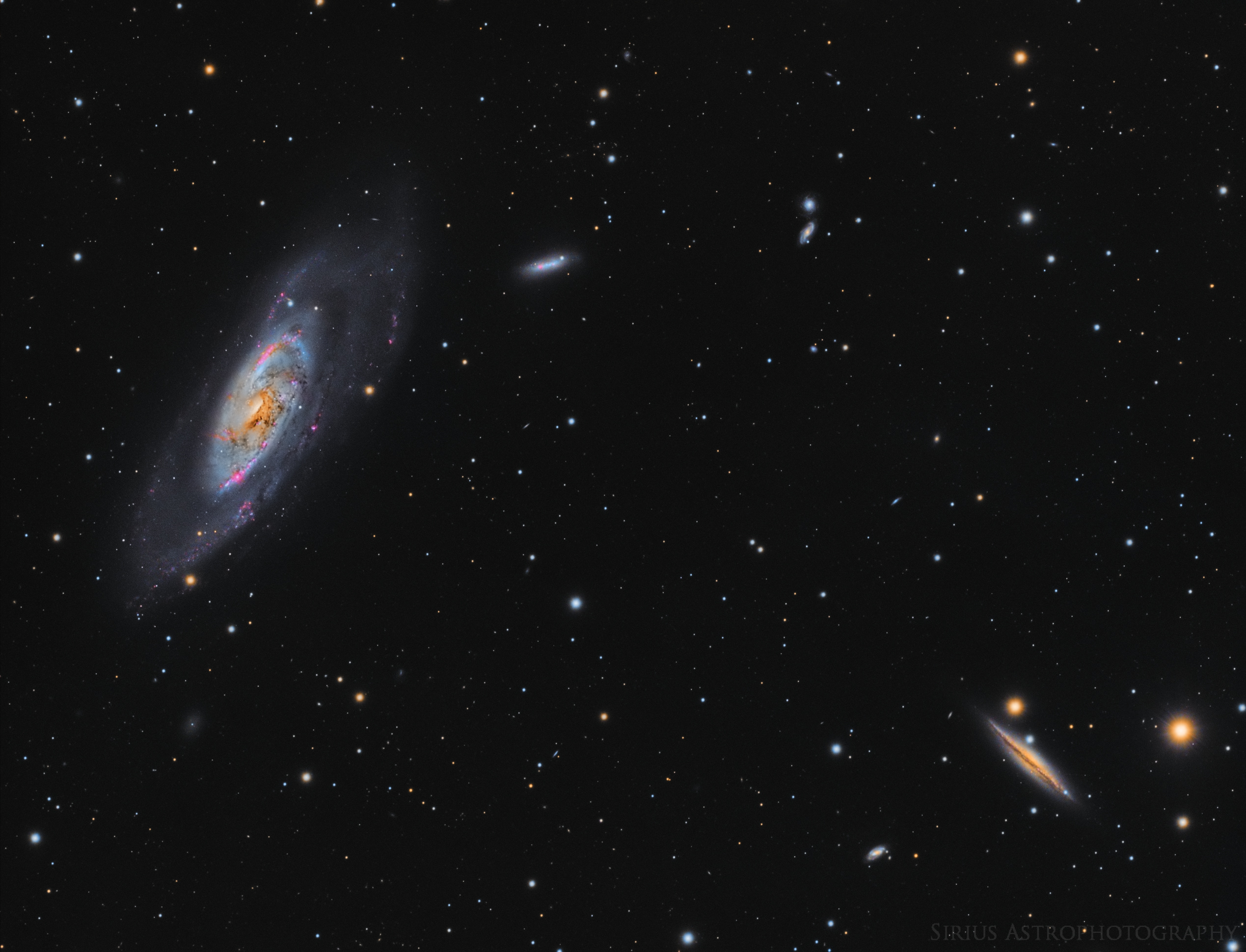2019 June 20
M106方向的景观
影像来源:Phil Keyser
说明:这幅宇宙远景图呈现了庞大、明亮又美丽的旋涡星系M106。这幅跨度将近2度的望远镜视野朝向北斗七星杓柄附近的猎犬座方向眺望。亦称为NGC 4258的M106是猎犬座II星系群中最庞大的成员,其大小约为8千光年,距离我们约2,350万光年远。作为一个遥远的星系,M106的距离非常精确,部分是因为我们能够通过追踪这个星系的微波激射来测量距离。这种非常罕见却自然发生的微波激射辐射是由环绕活跃星系核的分子云中的水分子产生的。影像中另一个耀眼的旋涡星系是位于M106右下方、几乎侧向的NGC 4217。NGC 4217距离测量的精确度要低很多,估计约为6千万光年。
A View Toward M106
Image Credit: Phil Keyser
Explanation: Big, bright, beautiful spiral, Messier 106 dominates this cosmic vista. The nearly two degree wide telescopic field of view looks toward the well-trained constellation Canes Venatici, near the handle of the Big Dipper. Also known as NGC 4258, M106 is about 80,000 light-years across and 23.5 million light-years away, the largest member of the Canes II galaxy group. For a far away galaxy, the distance to M106 is well-known in part because it can be directly measured by tracking this galaxy’s remarkable maser, or microwave laser emission. Very rare but naturally occurring, the maser emission is produced by water molecules in molecular clouds orbiting its active galactic nucleus. Another prominent spiral galaxy on the scene, viewed nearly edge-on, is NGC 4217 below and right of M106. The distance to NGC 4217 is much less well-known, estimated to be about 60 million light-years.







